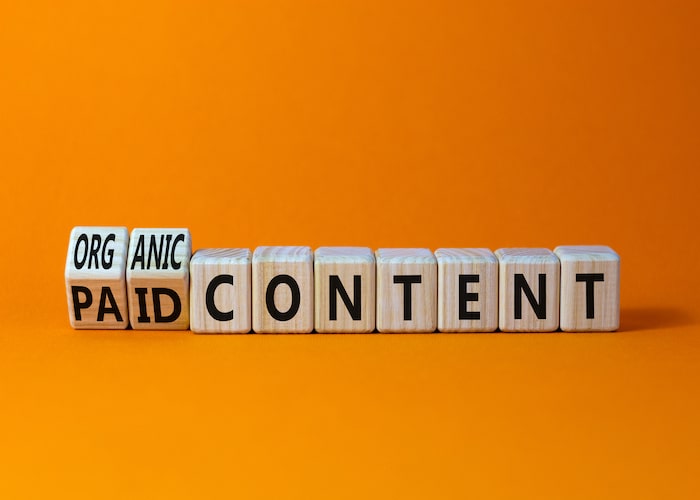Content Promotion: How to Balance Organic Results with Paid Ads
In the ever-evolving landscape of digital marketing, content promotion stands as a cornerstone for businesses striving to reach their target audience effectively. However, the dilemma often faced by marketers lies in striking the right balance between organic strategies and paid advertisements. This article delves into the intricacies of content promotion, exploring how to harmonize organic results with paid ads for optimal outcomes.
Understanding Organic Marketing:
Organic marketing encompasses the utilization of unpaid channels to disseminate content and engage with the audience. It revolves around fostering genuine connections and nurturing relationships rather than relying solely on monetary investments. Key components of organic marketing include organic advertising, which involves promoting content through non-paid channels such as social media, email newsletters, and search engine optimization (SEO).
Organic Content:
At the heart of organic marketing lies organic content – content that is crafted with the audience in mind, resonating with their interests, needs, and preferences. Organic content transcends mere promotional material; it seeks to provide value, educate, entertain, or inspire the audience. Whether it’s blog posts, videos, podcasts, or social media posts, organic content serves as the cornerstone of a robust organic marketing strategy.
Harnessing the Power of Organic Digital Marketing:
Organic digital marketing encompasses a holistic approach to digital outreach, focusing on building an online presence through authentic interactions and value-driven content. It encompasses various strategies, including:
- Search Engine Optimization (SEO): Optimizing content for search engines to improve visibility and organic traffic.
- Social Media Marketing: Leveraging social media platforms to engage with the audience, build communities, and foster brand loyalty.
- Content Marketing: Creating and distributing valuable content to attract and retain a targeted audience.
- Email Marketing: Cultivating relationships with prospects and customers through personalized email campaigns.
- Influencer Marketing: Collaborating with influencers to amplify reach and credibility within niche communities.
The Pay on Results PR Model:
One innovative approach to content promotion is the Pay on Results (PoR) PR model. Unlike traditional advertising models where payment is made upfront, PoR PR operates on the principle of performance-based payment. In essence, businesses only pay for tangible results achieved, such as website traffic, lead generation, or conversions.
Balancing Organic Results with Paid Ads:
Achieving the perfect balance between organic results and paid ads requires a strategic approach and a deep understanding of your target audience. Here are some key strategies to consider:
- Audience Segmentation: Divide your target audience into distinct segments based on demographics, interests, and behavior. Tailor your content and advertising efforts to resonate with each segment effectively.
- Content Personalization: Deliver personalized content experiences tailored to the preferences and needs of individual users. Leverage data and analytics to understand user behavior and preferences better.
- Integrated Campaigns: Integrate organic and paid strategies seamlessly to create cohesive marketing campaigns. Ensure consistency in messaging, branding, and user experience across all channels.
- Performance Monitoring: Continuously monitor the performance of your content and advertising efforts using key metrics such as engagement, click-through rates, and conversion rates. Adjust your strategies accordingly to optimize results.
- Experimentation and Optimization: Embrace a culture of experimentation and optimization to refine your content promotion strategies continually. Test different messaging, formats, and channels to identify what resonates best with your audience.
Organic Advertising:
In the realm of digital marketing, organic advertising emerges as a powerful tool for brands seeking to connect with their audience in meaningful ways. Unlike traditional paid advertisements, organic advertising focuses on fostering genuine interactions and building trust with consumers. This section explores the concept of organic advertising and how it complements organic marketing efforts to drive sustainable results.
Understanding Organic Advertising: Organic advertising involves the promotion of content or products through non-paid channels, emphasizing authenticity, transparency, and relevance. It encompasses various tactics, including:
- Social Media Engagement: Engaging with followers, responding to comments, and fostering conversations on social media platforms such as Facebook, Instagram, Twitter, and LinkedIn.
- User-Generated Content (UGC): Encouraging customers to create and share content related to your brand, products, or services. UGC adds authenticity and credibility to your marketing efforts.
- Influencer Partnerships: Collaborating with influencers or brand advocates to promote your products or services authentically to their followers.
- Viral Marketing: Creating compelling, shareable content that resonates with your target audience and has the potential to go viral organically.
Conclusion:
In the realm of digital marketing, finding the perfect balance between organic strategies and paid ads is crucial for brands like Marticking seeking to maximize their reach and engagement. By embracing organic marketing principles, leveraging innovative approaches such as Pay on Results PR, and harnessing the power of organic advertising, Marticking can create compelling content promotion campaigns that resonate with their audience authentically. Remember, the key lies in understanding your audience, delivering value-driven content, and continuously optimizing your marketing efforts for optimal results in today’s competitive landscape.



